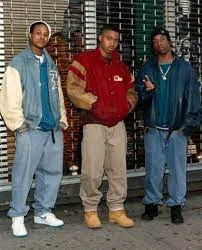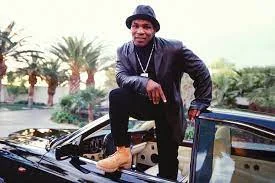90s Black Men’s Fashion: A Stylish Era That Left a Lasting Impact
In the cultural melting pot of the 1990s, Black men’s fashion took center stage, challenging conventions and redefining what it meant to be stylish and cool. This era witnessed a seismic shift, as bold new styles emerged from the streets, blending influences from hip-hop culture, streetwise, and work-wear into a unique and unapologetic aesthetic.
As someone who grew up during this time, I vividly remember the excitement and sense of rebellion that these fashion trends embodied. It was more than just clothes – it was a statement of self-expression, a celebration of individuality, and a reclamation of Black identity in the mainstream.
The Cultural Backdrop
To understand the significance of 90s Black men’s fashion, we must first explore the cultural backdrop that shaped it. The rise of hip-hop culture, with its raw energy and unapologetic attitude, played a pivotal role in influencing the fashion choices of young Black men. Rap artists like Tupac, The Notorious B.I.G., and Nas, among others, became not only musical icons but also style trendsetters, with their baggy jeans, oversize jerseys, and bold accessories.
Moreover, socioeconomic factors, such as the prevalence of gang culture and the realities of inner-city life, contributed to the aesthetic preferences of the time. Clothing became a way to express one’s identity, affiliations, and even survival in harsh environments.
Iconic 90s Black Men’s Fashion Trends
Baggy Jeans, Jerseys, and the Influence of Street wear
One of the most iconic trends of the 90s Black men’s fashion was the oversize, baggy aesthetic. Baggy jeans, often worn below the waistline, became a statement of rebellion against the slim-fitted styles of previous decades. Oversize jerseys, particularly those of popular sports teams, were also a staple, blurring the lines between sportswear and everyday fashion.
This street-wear influence was not just about looking cool – it was a reflection of the harsh realities faced by many Black youth at the time. Baggy clothes were seen as a practical choice, providing freedom of movement and a sense of protection in dangerous environments.
Bucket Hats, Timberland Boots, and the Crossover of Work wear
Another defining aspect of 90s Black men’s fashion was the integration of work wear into mainstream style. Bucket hats, initially worn by construction workers and fishermen, became a ubiquitous accessory, often paired with baggy jeans and oversize tees.
Timberland boots, originally designed for outdoor labor, also made their way into the fashion scene, becoming a symbol of ruggedness and durability. These work-inspired pieces not only added a unique edge to the overall aesthetic but also served as a nod to the working-class roots of many Black communities.
While the 90s Black men’s fashion was often associated with muted tones and earthy hues, there was also a bold and unapologetic embrace of vibrant colors, patterns, and prints. Bright hues like neon greens, vivid reds, and electric blues were used to make striking statements, challenging traditional notions of masculinity and fashion norms.
Patterns like plaid, camouflage, and bold geometric prints adorned shirts, jackets, and even accessories, adding a sense of playfulness and individuality to the overall look.
High-Top Sneakers: The 90s Footwear Obsession
No discussion of 90s Black men’s fashion would be complete without mentioning the obsession with high-top sneakers. Basketball shoes, particularly Air Jordans, became more than just athletic footwear – they were fashion statements in their own right.
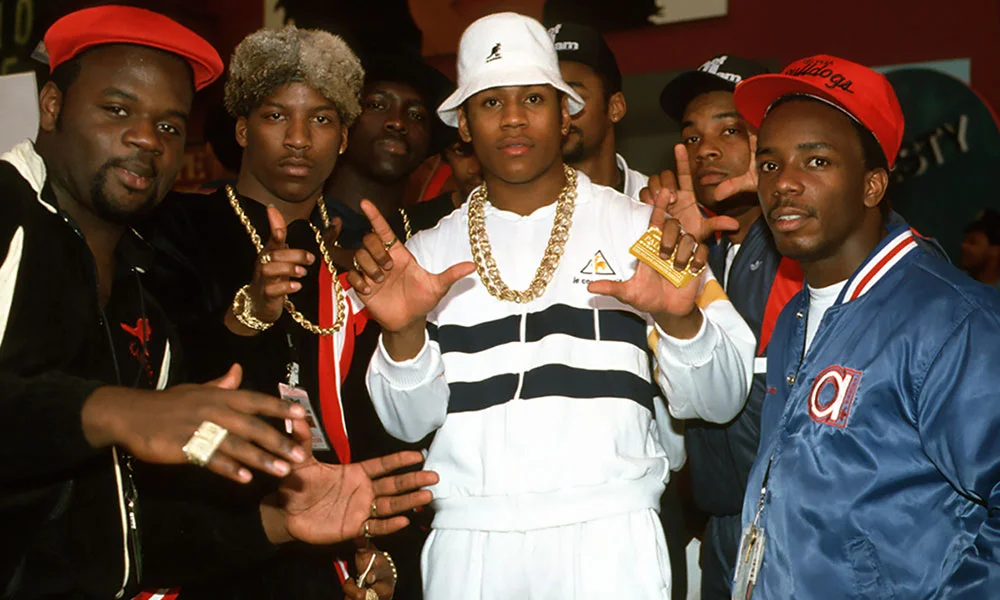
The cultural significance of these sneakers extended far beyond the basketball court. Celebrities and athletes alike fueled the craze through endorsements and strategic marketing campaigns. Owning a pair of the latest Air Jordans or Adidas sneakers became a status symbol, with some collectors even going to extreme lengths to acquire rare or limited-edition models.
The Oversized, Baggy Aesthetic
The oversize, baggy aesthetic was perhaps the most defining characteristic of 90s Black men’s fashion. It was a deliberate rejection of the slim-fitted styles that had dominated previous decades, and it carried with it a sense of rebellion and nonconformity.
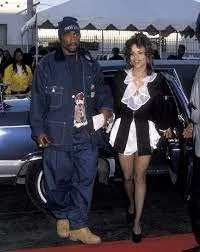
This look was heavily influenced by the prison, gang, and hip-hop cultures of the time. Wearing baggy jeans and oversize hoodies or tees became a way to assert one’s identity and affiliations, while also providing a sense of protection and anonymity in harsh urban environments.
Moreover, the oversize aesthetic was a direct challenge to traditional notions of masculinity and what it meant to be stylish. It was a bold statement that defied societal expectations and celebrated individuality and self-expression.
Hairstyles That Defined the 90s Black Male Look
Hair played a significant role in the overall aesthetic of 90s Black men’s fashion. From the iconic hi-top fade and flat-tops to the transition towards wavy haircuts, braids, and dreadlocks, hairstyles were an integral part of the cultural expression.
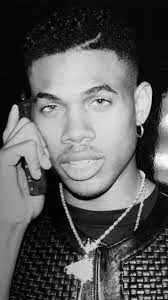
The hi-top fade, characterized by its precisely sculpted shape and sharp lines, became a staple among Black men in the early 90s. It was a bold and daring choice that required skill and precision to maintain, often becoming a source of pride and self-expression.
As the decade progressed, there was a shift towards more natural hairstyles, such as waves, braids, and dreadlocks. These styles not only reflected a growing embrace of Black cultural heritage but also served as a form of rebellion against societal norms and expectations.
Facial hair trends also played a role, with pencil mustaches, soul patches, and goatees becoming popular choices among Black men, adding an edgy and sophisticated touch to their overall look.
Influence on Mainstream Fashion and Pop Culture
While 90s Black men’s fashion emerged from the streets and urban communities, its influence quickly spread to the mainstream, leaving an indelible mark on popular culture and fashion trends.
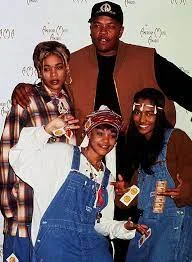
As hip-hop music and culture gained widespread popularity, the fashion aesthetic associated with it also found its way into the wardrobes of people from all backgrounds. Baggy jeans, oversized jerseys, and bucket hats became commonplace, transcending racial and socioeconomic boundaries.
Prominent white celebrities, such as Justin Timberlake and Eminem, adopted and co-opted elements of the 90s Black men’s fashion aesthetic, further cementing its influence and mainstream appeal.
However, this appropriation also raised questions about the fine line between cultural appreciation and cultural appropriation. Critics argued that while the fashion trends were being embraced by the mainstream. The underlying social and political messages were often lost or misunderstood.
The Enduring Legacy of 90s Black Men’s Style
Despite the passage of time, the influence of 90s Black men’s fashion continues to resonate in contemporary fashion and pop culture. Many of the iconic trends and styles have resurfaced and been reinterpreted by modern designers and brands.

Baggy jeans and oversize hoodies have made a comeback, with street wear brands like Supreme . And Off-White capitalizing on the nostalgia and enduring appeal of this aesthetic. Similarly, high-top sneakers, particularly the iconic Air Jordan line, remain coveted items among sneaker-heads and fashion enthusiasts alike.
Beyond just clothing, the broader social impacts of 90s Black men’s fashion cannot be overlooked. It challenged traditional notions of masculinity and encouraged self-expression. Also paving the way for greater inclusive and diversity in the fashion industry.
Moreover, the bold and unapologetic attitude that characterized this era served as an inspiration for future generations. Empowering them to embrace their individuality and reject societal norms that sought to confine them.
As we look back on this trans-formative period in fashion history. it’s essential to celebrate the legacy of 90s Black men’s style and its enduring influence on popular culture. It was a time of rebellion, self-expression, and redefining what it meant to be cool . An era that continues to shape and inspire fashion trends and cultural movements today.
People Also Ask:
What were popular 90s Black male hairstyles?
- Hi-top fade
- Flat-tops
- Wavy haircuts
- Braids
- Dreadlocks
Why were baggy clothes so popular in the 90s?
- Influenced by hip-hop and street culture
- Rebellion against slim-fitted styles
- Practical choice for freedom of movement
- Expression of identity and affiliations
What sneakers were trendy for Black men in the 90s?
- Air Jordans
- Adidas
- Timberland boots
How did hip-hop influence 90s Black male fashion?
- Rap artists and music videos set fashion trends
- Baggy jeans, oversize jerseys, and bold accessories
- Street-wear and work wear influences
Who were the biggest 90s Black male style icons?
- Tupac Shakur
- The Notorious B.I.G.
- Will Smith
- Nas
- Snoop Dogg
- Michael Jordan
By exploring the cultural roots, iconic trends, and enduring legacy of 90s Black men’s fashion. we gain a deeper appreciation for its significance in shaping modern style and pop culture. This era redefined what it meant to be cool, embracing individuality, self-expression. And a boldness that continues to inspire generations to come.

